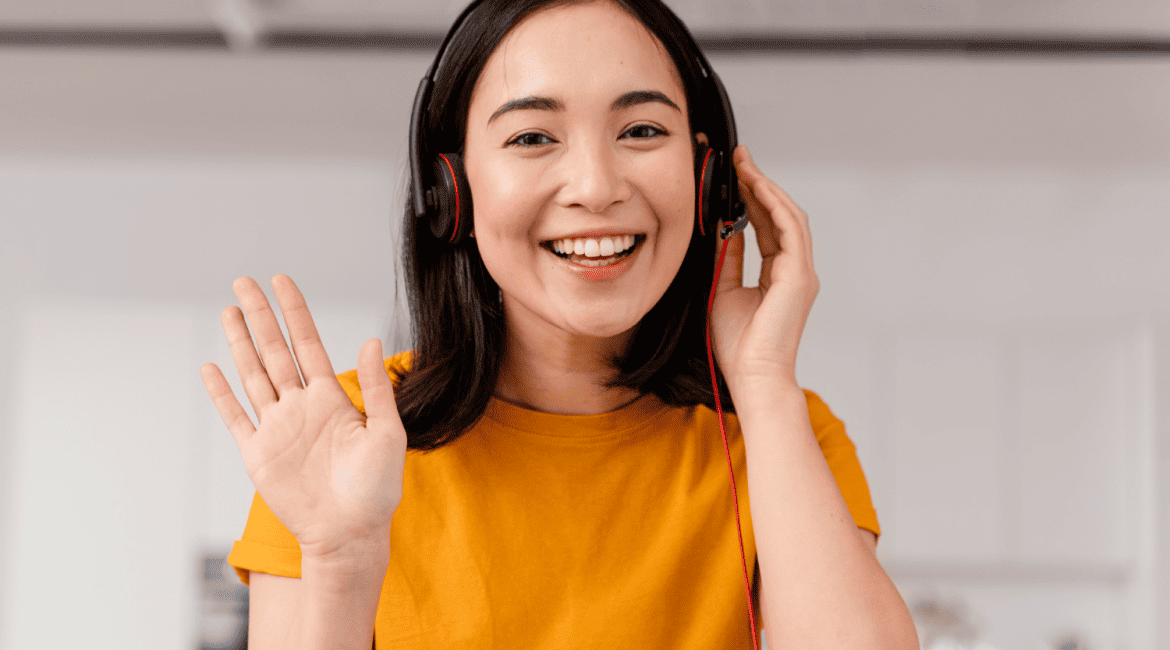The way we work is evolving rapidly. Traditional office routines give way to more fluid and personalized approaches, driven by a growing need for autonomy, balance, and adaptability. At the heart of this transformation is the rise of flexible work arrangements, practices that are not only redefining workplace culture but also reshaping how individuals manage their professional and personal lives.
For employees, this shift opens the door to greater control over their schedules and environments, promoting well-being and productivity. For employers, it offers a chance to build more resilient, inclusive, and high-performing teams. But embracing this flexibility also brings new challenges, such as managing collaboration across distances, maintaining engagement, and preserving a sense of shared culture.
Understanding how to navigate this changing landscape is essential for anyone looking to thrive in the modern world of work.
Table of Contents
ToggleHow Flexibility is Redefining Work Culture
The traditional 9 to 5 office model is no longer the default. In its place, a more flexible, employee-centric approach to work has taken hold, reshaping not only where we work but how we define productivity, collaboration, and balance. This shift reflects both a technological leap and a cultural evolution toward autonomy and adaptability.
How Technology and the Pandemic Accelerated Remote Work
The groundwork for remote work was laid long before it became a global norm. Innovations like high-speed internet, cloud computing, and digital collaboration tools such as Slack, Zoom, and Microsoft Teams have made it easier than ever to stay connected from virtually anywhere. These technologies removed the physical barriers to teamwork, allowing employees to contribute without being tethered to an office desk.
Then came the global pandemic, a major catalyst that turned remote work from a growing trend into a business imperative. Practically overnight, organizations were forced to pivot. What started as a temporary solution quickly became a long-term strategy. Companies that once hesitated to allow remote work found it not only possible but, in many cases, beneficial.
This transformation extended to hiring practices as well. Many businesses began relying on enterprise recruiting software to attract, evaluate, and onboard talent remotely. These platforms made it possible to maintain efficient and consistent hiring processes even when traditional, in-person methods were no longer viable.
The Rise of Flexible Work Models and Their Benefits
As remote work proved viable, more flexible work models began to gain popularity. These include:
- Telecommuting: Working remotely on a full- or part-time basis.
- Flextime: Allowing employees to choose their own start and end times within agreed-upon limits.
- Compressed workweeks: Condensing 40 hours into fewer days, such as four 10-hour shifts.
These arrangements offer employees greater control over their schedules, enabling them to better balance personal responsibilities and reduce daily stressors like commuting. For employers, flexibility can translate into lower overhead costs, access to a wider talent pool, and increased employee satisfaction and retention.
However, flexibility also introduces new challenges. Without clear boundaries, work can bleed into personal time, increasing the risk of burnout. Communication gaps may emerge, and not all tasks lend themselves well to remote execution. Still, when thoughtfully implemented, flexible work models can drive both individual well-being and organizational performance.
Key Benefits and Challenges of Flexible Work Arrangements
Flexible work arrangement models offer numerous advantages, but they also bring new challenges that require planning and management.
Benefits of Flexible Work Arrangements for Employees and Employers
For Employees:
- Improved Work-Life Balance: Flexibility allows individuals to better align their work hours with personal needs, leading to reduced stress and more time for family, hobbies, or self-care.
- Lower Stress and Burnout: Eliminating commutes and gaining more control over daily routines can significantly lower anxiety and fatigue.
- Sustainable Lifestyle Choices: Remote work reduces the carbon footprint by decreasing commuting, and flexible hours can support healthier, more sustainable habits.
For Employers:
- Cost Savings: With fewer employees in the office full-time, companies can reduce expenses related to office space, utilities, and supplies.
- Attracting and Retaining Talent: Flexibility is a top priority for many job seekers. Offering it can make your organization more competitive in the hiring process.
- Greater Workforce Diversity: Remote work opens up opportunities for individuals who may not be able to relocate or work traditional hours, such as caregivers, people with disabilities, or those in different geographic regions.
Challenges of Flexible Work Arrangements and How to Navigate Them
1. Communication and Collaboration Issues: Without face-to-face interaction, teams may struggle with miscommunication or reduced engagement. To counter this, companies should invest in reliable communication tools, set expectations for availability, and promote a culture of transparency.
2. Need for Clear Performance Metrics and Accountability: In flexible settings, output matters more than time spent at a desk. Employers must define measurable goals and results-based evaluation methods. This encourages autonomy while maintaining accountability.
3. Blurred Work-Life Boundaries: When the home becomes the office, it’s easy for work to spill into personal time. Encouraging employees to set clear work hours, take breaks, and unplug after work helps maintain a healthy balance. Managers should lead by example and respect boundaries.

Preparing for a Smooth Shift to Flexible Work
Adopting a flexible work arrangement can significantly improve work-life balance, but making the most of it requires thoughtful preparation, honest communication, and disciplined routine-building. Whether you’re transitioning to hybrid, remote, or flextime work, setting yourself up for success begins with a proactive approach.
Self-Assessment and Workspace Setup: Before jumping into flexible work, take time to evaluate which aspects of your role are suited for remote execution. For example, client meetings and collaborative brainstorming may still benefit from in-person interaction, while tasks like writing reports or analyzing data can be done independently. A 2022 study found that 60% of remote-capable employees prefer a hybrid model, showing the value of blending both worlds.
Alongside this assessment, create a dedicated, ergonomic workspace that minimizes distractions and supports sustained productivity. This might include an adjustable chair, proper lighting, a reliable internet connection, and tools like noise-canceling headphones. Even small changes, like adding a plant or organizing cables, can positively influence focus and comfort.
Communicating With Your Employer: Effective communication is essential for a smooth transition. Instead of simply requesting flexibility, come prepared with a clear plan. For instance, outline how you’ll maintain productivity, ensure availability for team meetings, and stay accountable to goals. Emphasize benefits like fewer interruptions and improved focus during deep work periods.
Many organizations are open to flexible arrangements. PwC’s 2021 Remote Work Survey reported that 83% of employers found the shift to remote work successful. Still, collaboration is key. Be ready to compromise, such as agreeing to be in-office on key project days or checking in regularly through project management tools.
Establishing Boundaries and Routines: Without a structured schedule, flexible work can easily blur the lines between work and home life. Start by setting clear work hours and break times. Tools like shared calendars or status indicators in messaging apps can reinforce availability.
For example, setting “Do Not Disturb” hours during periods of deep focus not only protects your productivity but also signals to coworkers that you value efficient communication. Similarly, creating a simple end-of-day ritual, like shutting your laptop or going for a walk, can mentally separate work time from personal time. To avoid burnout, the American Psychological Association recommends routine breaks and regular workday shutdowns. This helps preserve energy, prevent overworking, and sustain long-term motivation.
Making Hybrid Work: Balancing Flexibility and Collaboration
To thrive in a hybrid work model, both employees and organizations must intentionally balance flexibility with collaboration, and autonomy with alignment.
One of the key challenges of hybrid work is managing expectations in two very different environments. Employees must learn to transition smoothly between home and office, often within the same week. Establishing clear routines for each setting is critical. For example, reserve office days for high-collaboration activities, team brainstorming sessions, one-on-ones, or client meetings, and use remote days for deep focus work. Companies should define hybrid schedules clearly, whether it’s fixed in-office days or flexible check-ins. To address this, make office days purposeful, centered around connection, creativity, and team cohesion. As organizations grow and evolve, accommodating diverse office cultures becomes essential to ensure all teams feel included and supported in both settings.
Technology is the backbone of effective hybrid teams. Invest in tools that bridge location gaps, such as virtual whiteboards (like Miro), real-time document collaboration (Google Workspace or Notion), and video conferencing platforms with async features (like Loom). Use shared calendars and project management systems (e.g., Asana, Trello) to give everyone visibility, regardless of location.
Hybrid meetings require special attention. Ensure everyone has an equal seat at the table, equip meeting rooms with quality audio/video tech, and encourage remote attendees to speak up first. Rotate meeting facilitation roles to avoid proximity bias favoring in-office employees.
One of the greatest risks of hybrid work is team fragmentation. To combat this, build rituals that include everyone, such as virtual coffee chats, remote-friendly all-hands meetings, or hybrid celebrations. And remember equity: ensure career development, feedback, and visibility aren’t skewed in favor of those who are more present in the office. Managers must be intentional about performance reviews and growth opportunities, using clear metrics and regular 1:1s to ensure fairness across locations.

Legal Considerations for Flexible Work Arrangements
Organizations also must navigate a complex legal landscape to ensure they remain compliant and protect both their employees and operations. From labor laws to data privacy, understanding and addressing these legal considerations is essential for sustainable implementation.
Labor Laws and Compliance: Flexible work arrangements often cross regional, national, or even international borders, triggering diverse legal obligations. Employers must be aware of variations in:
- Working hour regulations – Some countries have strict rules on maximum work hours, overtime pay, and mandated break times. For instance, the EU Working Time Directive limits the workweek to 48 hours unless opted out.
- Wage and tax implications – In the U.S., state income taxes may apply differently depending on where the employee resides or performs their work. Similarly, remote work in another country may create “permanent establishment” risks for the company.
- Employee classification – Companies must ensure remote or hybrid workers are correctly classified as employees or contractors based on labor laws, which can differ significantly across jurisdictions.
A good tip is to partner with local legal counsel when expanding flexible work policies internationally to avoid compliance pitfalls.
Health and Safety in Remote Work: Health and safety regulations don’t disappear outside the office. Employers are often still responsible for providing a safe work environment, even when employees work from home.
- Employers may need to assess ergonomic risks and provide equipment like adjustable chairs or laptop stands to prevent long-term injuries.
- In some jurisdictions, employees may be entitled to workers’ compensation for injuries sustained during work-from-home hours, which complicates liability boundaries.
For example, Germany’s Federal Social Court ruled that a man injured on his way from his bed to his home office was eligible for workplace accident insurance. Best practice is to include safety guidelines in remote work policies and consider virtual home office assessments.
Data Security and Privacy: Remote work environments increase exposure to cybersecurity threats, requiring stricter protocols to safeguard sensitive data and intellectual property.
- Companies must ensure compliance with data protection regulations like GDPR, CCPA, or HIPAA, depending on their region and industry.
- Risks include unsecured Wi-Fi networks, use of personal devices, or weak access controls.
Best practices include enforcing VPN usage and multi-factor authentication (MFA), implementing remote device management and encryption policies, and conducting regular employee training on phishing and data hygiene. Privacy laws may also restrict employee monitoring practices. Employers should balance security with respect for individual privacy rights and disclose monitoring policies.
Leveraging Innovative Technologies to Support Flexible Work
Flexible work arrangements thrive on the backbone of reliable, scalable, and user-friendly technologies. From day-to-day collaboration to long-term team integration, the right tools make it possible for organizations to support remote and hybrid models while maintaining productivity, communication, and security.
Collaboration Tools: Clear and consistent communication is critical in a flexible work environment. Platforms like Zoom, Microsoft Teams, and Slack have become essential for real-time interaction and asynchronous collaboration.
- Zoom enables high-quality video conferencing and webinars, ideal for meetings and virtual training sessions.
- Slack offers channels for focused conversations, direct messaging, and integration with hundreds of tools like Google Drive and Jira.
- Microsoft Teams combines messaging, video, and file sharing with seamless Office 365 integration, making it a powerful all-in-one solution.
Avoid tool overload by standardizing on a select few platforms and training teams on best practices for their use. For example, defining which communication happens in Slack vs. email can cut down on confusion and information silos.
Project Management Software: To stay aligned and organized, especially across time zones or locations, project management tools like Asana, Trello, and Monday.com provide visibility into team progress, task ownership, and deadlines.
- Trello uses a simple, card-based layout for task tracking, ideal for small teams or visual learners.
- Asana supports goal setting, timelines, and reporting features for more complex workflows.
- Monday.com offers customizable dashboards and automations for managing everything from task assignments to status updates.
According to a 2023 survey by Capterra, 78% of remote teams using project management tools reported improved task clarity and reduced miscommunication.
AI and Automation: Artificial intelligence is increasingly helping companies streamline operations and reduce manual workloads.
- AI-powered scheduling tools like Calendly or Motion optimize meeting times across distributed calendars.
- Chatbots and automated responders manage customer support or internal IT tickets.
- AI writing assistants like ChatGPT or Grammarly Business improve internal communications, content production, and reporting.
These tools not only reduce administrative burden but also allow employees to focus on more strategic work. For example, automated meeting summaries powered by AI (as seen in tools like Otter.ai) ensure no details are lost, even if team members are in different time zones.
Cybersecurity Measures։ With employees accessing sensitive company data from multiple locations and devices, robust cybersecurity is non-negotiable. Key technologies include:
- Virtual Private Networks (VPNs) to encrypt internet connections.
- Secure cloud storage solutions like Google Workspace, OneDrive, or Dropbox Business with access control features.
- End-to-end encryption tools like ProtonMail and Signal are for confidential communications.
Companies are also increasingly using Endpoint Detection and Response (EDR) tools to monitor device security and enforce compliance remotely. A 2024 IBM report found that remote work environments see a 40% increase in phishing attacks, highlighting the importance of layered security systems and regular employee training.
Onboarding and Integration Tools։ Flexible work doesn’t end with tools for day-to-day tasks, it starts with how new hires are brought into the system. Recruitment software and onboarding software such as BambooHR, Workable, and Hirebee.ai can automate essential tasks like:
- Digital document signing
- Role-based onboarding flows
- Scheduled training modules
- Team introductions via virtual meet-and-greets
This structured onboarding is particularly important in hybrid settings, where new employees might not meet the full team in person. These tools reduce onboarding time and improve engagement from day one, ultimately helping to lower the new hire turnover rate by creating a more connected and supportive experience from the start.
Conclusion
The future of work is not just flexible, it’s smarter, more inclusive, and strategically driven. Organizations that proactively adopt flexible work arrangements, whether remote, hybrid, or flextime, aren’t just reacting to trends; they’re positioning themselves for long-term success. These models empower employees to achieve better work-life integration, boost engagement, and deliver measurable gains in productivity and satisfaction.
But flexibility alone isn’t enough. Success in this new landscape demands the right infrastructure, a forward-thinking culture, and tools designed to bridge distance and complexity. Technologies that streamline collaboration, protect data, and automate tasks are essential. Just as importantly, recruitment platforms like Hirebee play a critical role in this ecosystem, helping businesses attract top talent, onboard them seamlessly, and keep them connected from day one.
By embracing innovation and cultivating a culture of trust and adaptability, companies can future-proof their workforce and build environments where both business goals and employee well-being thrive. The path forward is clear: flexible work is not a compromise, it’s a competitive advantage. Now is the time to lead the change.









